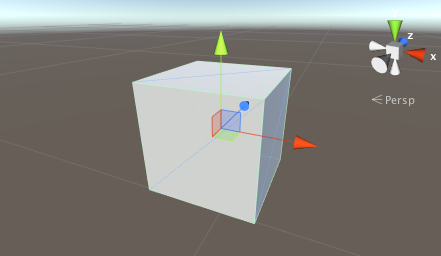Primitive and placeholder objects
In the Unity Editor, you can work with 3D models of any shape that you can create with modeling software. You can create several object types in the Editor, for example, the:
- Cube
- Sphere
- Capsule
- Cylinder
- Plane
- Quad
To add a primitive to a scene, select GameObject > 3D Object and select the required primitive. This adds the default primitive to your local coordinate space, and you can change the size and position of the object in the Inspector window with transforms.
These objects can be useful to model specific items or you can use them to create placeholders and prototypes for testing. This page details common uses of each primitive object, but you can use the objects in the way that suits your project best.
Cube

The default Cube primitive is a white cube with six sides, which are 1 x 1 units. The cube is textured so the image repeats on each side. Cubes are often used to construct walls, posts, boxes, steps and other similar objects or as a useful placeholder during development. For example, because the cube’s edges are one unit long, you can check the proportions of a meshThe main graphics primitive of Unity. Meshes make up a large part of your 3D worlds. Unity supports triangulated or Quadrangulated polygon meshes. Nurbs, Nurms, Subdiv surfaces must be converted to polygons. More info
See in Glossary imported into your sceneA Scene contains the environments and menus of your game. Think of each unique Scene file as a unique level. In each Scene, you place your environments, obstacles, and decorations, essentially designing and building your game in pieces. More info
See in Glossary if you add a cube close to it and compare the size.
Sphere

The default sphere primitive has a diameter of one unit (that is, 0.5 unit radius). The sphere is textured with standard spherical UV mapping so that the image wraps around the sphere and the top and bottom edges pinch together at each pole. Spheres are useful for representing balls, planets, and projectiles. You can make GUI device for representing the radius of an effect using a semi-transparent sphere.
Cylinder

The default cylinder primitive is two units high and one unit in diameter. The cylinder is textured so that the image wraps once around the tube shape of the body and repeats separately on the two flat ends. Cylinders are useful if you want to create posts, rods, and wheels. The default shape of a ColliderAn invisible shape that is used to handle physical collisions for an object. A collider doesn’t need to be exactly the same shape as the object’s mesh - a rough approximation is often more efficient and indistinguishable in gameplay. More info
See in Glossary is a capsule (there is no primitive cylinder collider in Unity). To get an accurate cylindrical physics Collider, create a mesh of a cylinder shape in a modeling program and attach a mesh ColliderA free-form collider component which accepts a mesh reference to define its collision surface shape. More info
See in Glossary.
Capsule

The capsule primitive is a cylinder with hemispherical caps at each end. The default capsule is one unit in diameter and two units high (the body is one unit, and each cap is 0.5 units). It is textured so the image wraps around once and the edges pinch together at the apex of each hemisphere. The capsule is a useful placeholder for prototypes because the physics of a rounded object are more suited to certain tasks than those of a box.
Quad

The default quad primitive is a square with edges one unit long, divided into two triangles, and is oriented in the xy plane of the local coordinate space. You can use a quad as a display screen for an image or movie. You can also use quads to implement simple GUI and information displays, particlesA small, simple image or mesh that is emitted by a particle system. A particle system can display and move particles in great numbers to represent a fluid or amorphous entity. The effect of all the particles together creates the impression of the complete entity, such as smoke. More info
See in Glossary, spritesA 2D graphic objects. If you are used to working in 3D, Sprites are essentially just standard textures but there are special techniques for combining and managing sprite textures for efficiency and convenience during development. More info
See in Glossary, and imposter images as substitutes for solid objects views at a distance.
Plane

The default plane primitive is a flat square with edges ten units long, divided into 200 triangles, and is oriented in the xz plane of the local coordinate space. The square is textured so that the complete image appears once within the square.
Planes are useful for most flat surfaces, such as floors and walls. You can use a plane to show special effects and images or movies in GUI, but it might be easier to use a quad primitive.
A plane’s texture only renders from above. If you are below the plane, the plane’s texture is transparent.